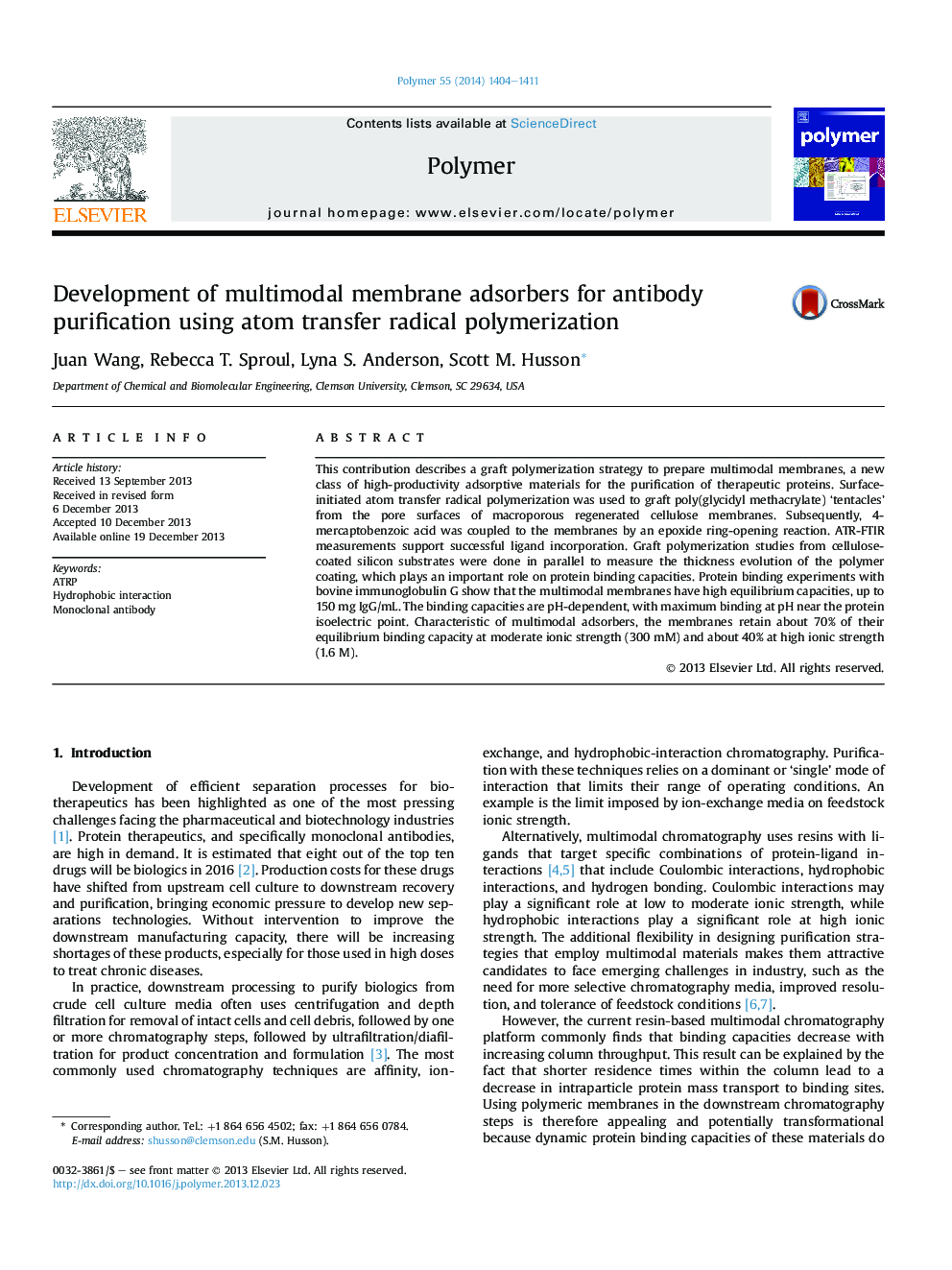| Article ID | Journal | Published Year | Pages | File Type |
|---|---|---|---|---|
| 5181595 | Polymer | 2014 | 8 Pages |
This contribution describes a graft polymerization strategy to prepare multimodal membranes, a new class of high-productivity adsorptive materials for the purification of therapeutic proteins. Surface-initiated atom transfer radical polymerization was used to graft poly(glycidyl methacrylate) 'tentacles' from the pore surfaces of macroporous regenerated cellulose membranes. Subsequently, 4-mercaptobenzoic acid was coupled to the membranes by an epoxide ring-opening reaction. ATR-FTIR measurements support successful ligand incorporation. Graft polymerization studies from cellulose-coated silicon substrates were done in parallel to measure the thickness evolution of the polymer coating, which plays an important role on protein binding capacities. Protein binding experiments with bovine immunoglobulin G show that the multimodal membranes have high equilibrium capacities, up to 150Â mg IgG/mL. The binding capacities are pH-dependent, with maximum binding at pH near the protein isoelectric point. Characteristic of multimodal adsorbers, the membranes retain about 70% of their equilibrium binding capacity at moderate ionic strength (300Â mM) and about 40% at high ionic strength (1.6Â M).
Graphical abstractDownload full-size image
